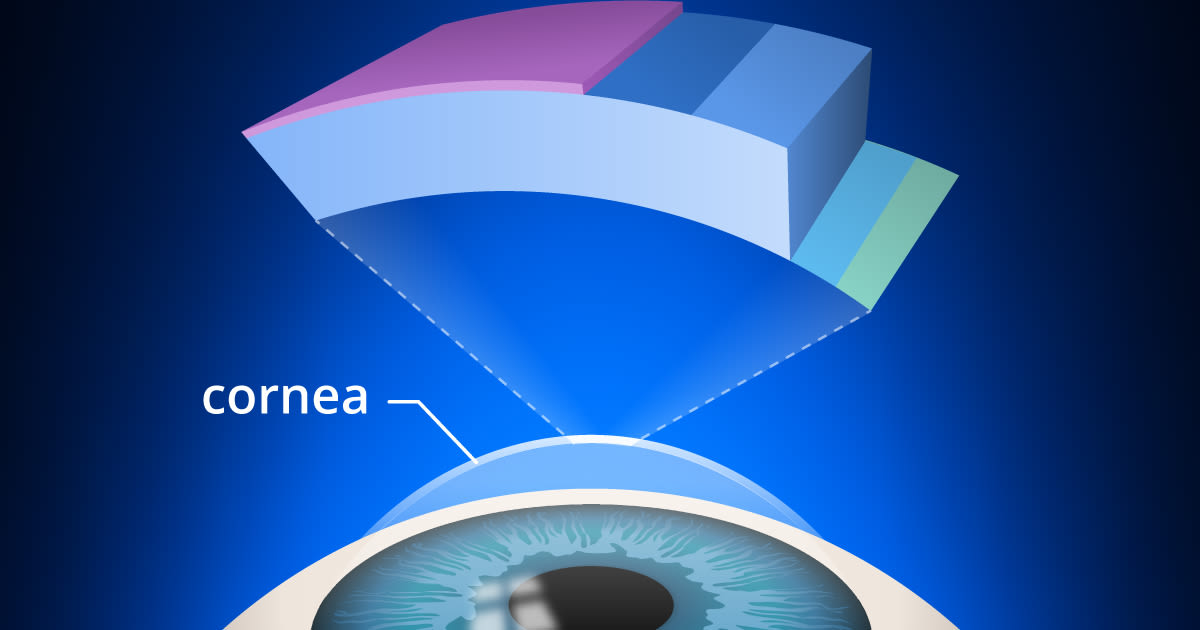Can I have LASIK if I have Keratoconus?
Keratoconus is a progressive eye disease in which the normally round cornea thins and begins to bulge into a cone-like shape. This cone shape...


Actually, it can. Well probably. If you have an astigmatism, you likely already know what it is and have used the football analogy to describe it to people who have no idea what you’re talking about. But, can LASIK turn your football-shaped cornea into a basketball?
LASIK works by using a highly focused laser to reshape the cornea, and people with mild to moderate astigmatism can be candidates for the procedure. However, you first must be a candidate for LASIK, which we can determine if you are.
Many people avoid LASIK out of fear of the pain involved. Well, we have good news. Thanks to modern medicine, you may experience a lot less discomfort than you might expect. Prior to the procedure, you’ll receive eye drops to numb your eyes. And while the discomfort varies from person to person — some experience none at all — you’ll likely feel a pressure that usually lasts no longer than a minute.
But what if you’re still anxious? We’d recommend talking to our doctor. We can give you medication, prior to the procedure, to calm your nerves. We also encourage you to ask all your questions upfront. You’ll find the more you know, the less there is to be afraid of!
It’s NOT. While there are known potential side effects, which you can read more about at the bottom of this story, any complications from the procedure can usually be managed with follow-up care. The frequency and severity of complications vary, depending on how much nearsightedness, farsightedness and/or astigmatism you have prior to the procedure and other factors.
LASIK can yield excellent results when performed on the right patient, but it is not for everyone. If you have collagen vascular, an autoimmune disease, or an immunodeficiency disease, you should avoid LASIK, as they affect the body’s healing ability. Additionally, if you are pregnant or nursing, experiencing corneal thinning, or taking medications with eye-related side effects, you should not get LASIK. Take our free online assessment to see if you are a good candidate for a LASIK consultation.
Did you know that there is actually more than one kind of LASIK, one being blade-free LASIK? Hold on a minute… LASIK involves blades? Well, it can, but it doesn’t have to and ours does not. When preparing your eye for the procedure, a doctor can use either a microkeratome blade or a femtosecond laser (blade-free). Dr. Lindahl uses blade-free LASIK.
LASIK typically involves two lasers — the aforementioned femtosecond laser, which is used to prep your eye for the vision correction part, followed by an excimer laser, which is used to correct the corneal tissue to fix your vision.
On average, LASIK can cost $4,400+ for both eyes, or approximately $2,200 for each. And, while we are talking about your eyesight here, we realize that’s not exactly pocket change. Fortunately, we recognize this and offer payment plans through CareCredit and with 0% financing available for 24 months, the payments are $147.42/month (sale price included.)
Well, this one is sort of a myth because it depends on what you do with your life. For example, if you’re a swimmer or someone that does high-impact sports, you’ll want to talk to Dr. Lindahl about when it’s okay to resume these activities. If this doesn’t sound like your typical day, then it’s safe to assume that you’ll be able to go back to your daily routine as soon as the next day. As with any surgery, side effects and recovery time can vary from person to person, so it’s best to keep in close contact with your doctor to ensure your eyes heal properly.
Scientists have shown that the average person blinks between 15 and 20 times per minute. Knowing this, your eyes are likely already starting to water thinking about how long you’ll need to keep them open for LASIK. But, there’s no need to shed tears over this. Remember those numbing eye drops we mentioned earlier? Those will also help reduce your impulse to blink. And your LASIK procedure won’t take that long — in fact, less than one minute is spent on each eye!
Another concern that you can cross of your list. The laser used in the procedure has built-in technology that tracks and accounts for the eye’s movements, including the tiniest of involuntary movements. This keeps the laser on track to correct exactly the right spot. By exposing the myths behind LASIK, we hope you feel more comfortable and knowledgeable about the procedure. You likely still have questions, which we encourage you to ask them during your free consultation.
Now there are also side effects associated with LASIK. While they are rare, they can include eye dryness, which may be severe, loss of visual acuity or the need for glasses or contacts after surgery, and visual disturbances like halos (hazy rings around lights), glare, starbursts, double images and other visual irregularities that may be debilitating. This is a good subject to bring up during your LASIK consultation, about what you can expect to experience and anything you can do to manage side effects.
More questions? Go to our LASIK FAQ page to see more answers.

Keratoconus is a progressive eye disease in which the normally round cornea thins and begins to bulge into a cone-like shape. This cone shape...

With any decision in life, sometimes the hardest part is taking that first step that will help you make your decision. This can certainly be true for...

If you are consideringLASIK eye surgery, you probably have a lot of questions. One of the most common questions we hear at the Rochester...